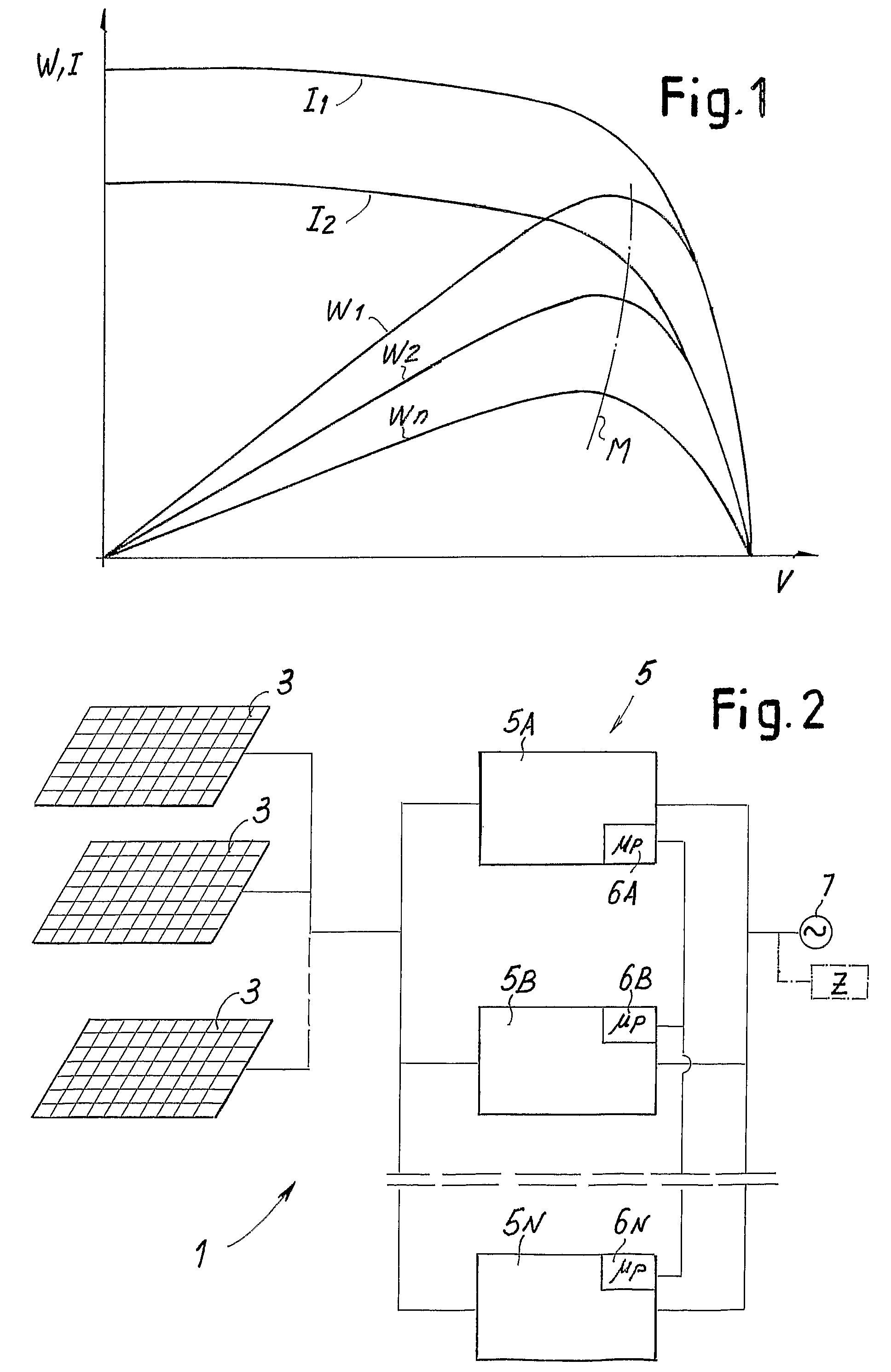Delivery of electric power by means of a plurality of parallel inverters and control method based on maximum power point tracking
a technology of electric power delivery and parallel inverter, which is applied in the direction of electric variable regulation, process and machine control, instruments, etc., can solve the problems of inverter entail at worst a reduction in power delivered but not stoppage of delivery, all the energy produced until the repair of the inverter is lost, and the inverter can entail at worst a reduction in power delivered, so as to achieve greater efficiency in the extraction of electric power
- Summary
- Abstract
- Description
- Claims
- Application Information
AI Technical Summary
Benefits of technology
Problems solved by technology
Method used
Image
Examples
Embodiment Construction
[0034]Here below the present invention will be described with specific reference to an application to a system of photovoltaic panels for exploitation of solar energy, but the principles underlying the invention can also be used in systems based on other renewable energy sources.
[0035]FIG. 1 shows the characteristic current and power curves according to the voltage at the output of the photovoltaic panel, already referred to in the introduction of the present description.
[0036]FIG. 2 very schematically shows a plant or system 1 for generation of electricity via the use of a series of photovoltaic panels 3. The photovoltaic panels 3 are connected to a plurality of inverters indicated overall by 5 and individually indicated by 5A, 5B . . . 5N. The inverters 5, each of which is provided with a control unit 6A, 6B . . . 6N, are interconnected in parallel and the outputs are connected to a grid 7, schematized as an ideal voltage generator. The inverters can also be connected to a local l...
PUM
 Login to View More
Login to View More Abstract
Description
Claims
Application Information
 Login to View More
Login to View More - R&D
- Intellectual Property
- Life Sciences
- Materials
- Tech Scout
- Unparalleled Data Quality
- Higher Quality Content
- 60% Fewer Hallucinations
Browse by: Latest US Patents, China's latest patents, Technical Efficacy Thesaurus, Application Domain, Technology Topic, Popular Technical Reports.
© 2025 PatSnap. All rights reserved.Legal|Privacy policy|Modern Slavery Act Transparency Statement|Sitemap|About US| Contact US: help@patsnap.com



